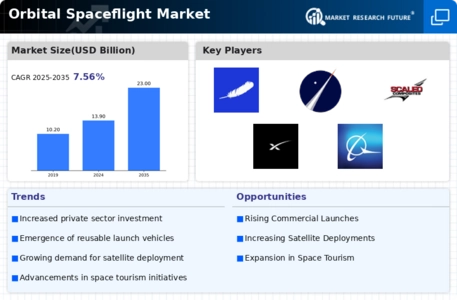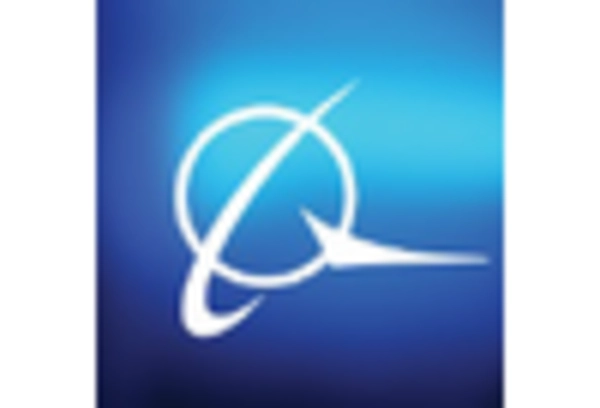Leading market players are investing heavily in research and development in order to expand their product lines, which will help the Orbital spaceflight market, grow even more. Market participants are also undertaking a variety of strategic activities to expand their footprint, with important market developments including new product launches, contractual agreements, mergers and acquisitions, higher investments, and collaboration with other organizations. To expand and survive in a more competitive and rising market climate, Orbital spaceflight industry must offer cost-effective items.
Manufacturing locally to minimize operational costs is one of the key business tactics used by manufacturers in the Orbital spaceflight industry to benefit clients and increase the market sector. In recent years, the Orbital spaceflight industry has offered some of the most significant advantages to medicine. Major players in the Orbital spaceflight market, including Blue Origin, The Spaceship Company, PD Aerospace, Copenhagen Suborbitals, ARCA Space, Sierra Nevada Corporation, Scaled Composites, Northrop Grumman Innovation Systems, SpaceX, Boeing and others, are attempting to increase market demand by investing in research and development operations.
The space aviation business Space Exploration Technologies Corp. (SpaceX) produces and launches rockets and spacecraft. It manages space station resupply missions for cargo. Heavy, medium, and low lift launch capabilities are all provided by SpaceX. The business has introduced Falcon 9 and Falcon Heavy as launch vehicles. Its launch locations are at Vandenberg Air Force Base (VAFB) in California and Cape Canaveral Air Force Station (CCAFS) in Florida. The business also provides ridesharing services and human spaceflight. Under the brand names SpaceX, Falcon, Falcon Heavy, and Dragon, the corporation provides a variety of goods and portfolios.
It tests engines and structures at a development site in McGregor, Texas. US state of California's Hawthorne serves as the home base for SpaceX.
Sierra Nevada Corp (SNC) is an electronic systems provider. The company develops and provides command, control, communications, computers, intelligence, surveillance, and reconnaissance solutions and electronic warfare systems. It also offers navigation, guidance, and landing systems, satellite solutions, command and control products, unmanned systems, sensors, and mission systems. SNC provides space systems, information systems, mobile and network security solutions, integrated ISR solutions, sensor and mission systems, and electronic warfare. It also offers aircraft modification and support, maintenance, logistics support, inspection, and overhaul services. The company operates through a network of facilities in the US, the UK, and Germany.
SNC is headquartered in Sparks, Nevada, the US.


















Leave a Comment